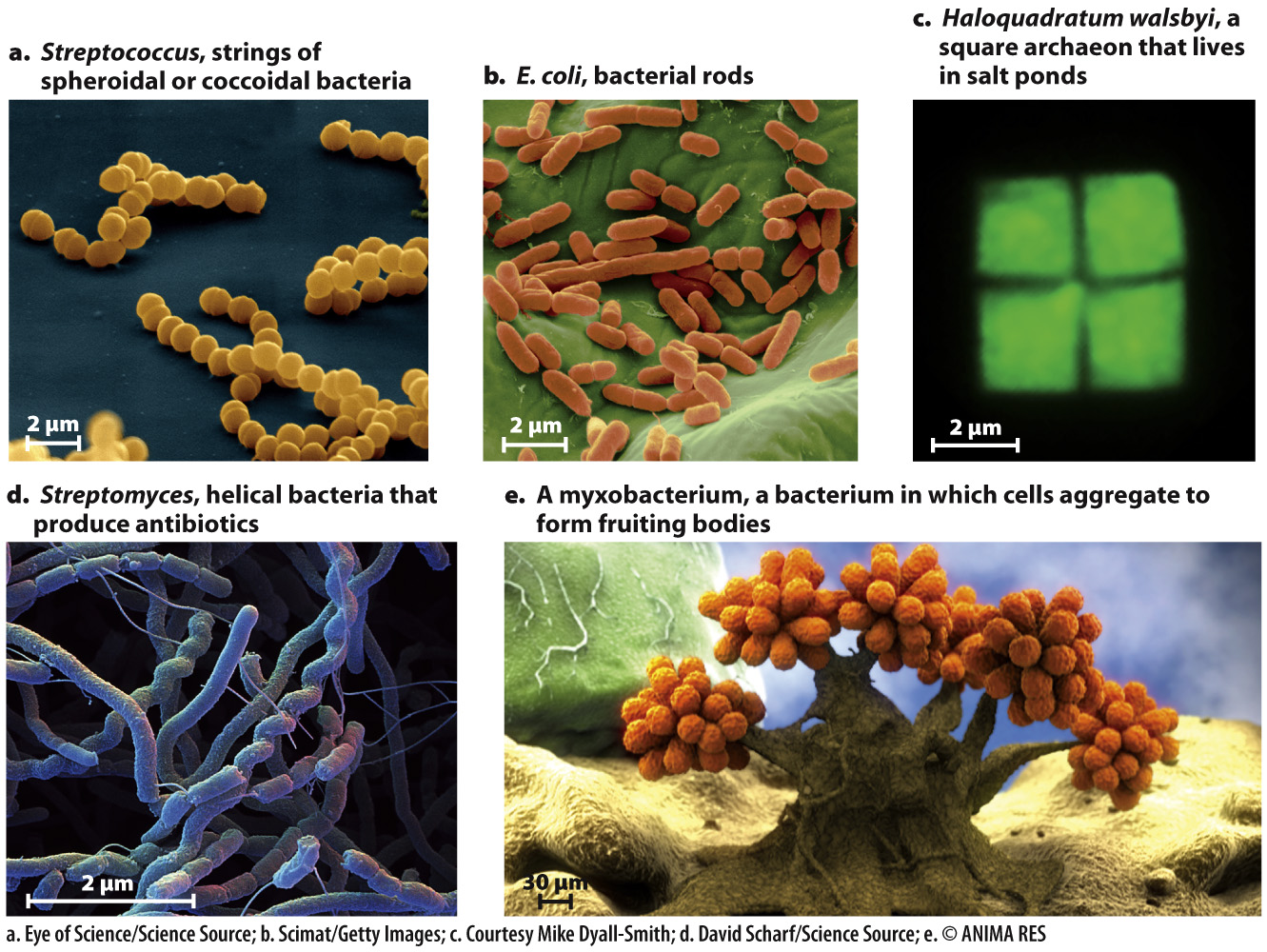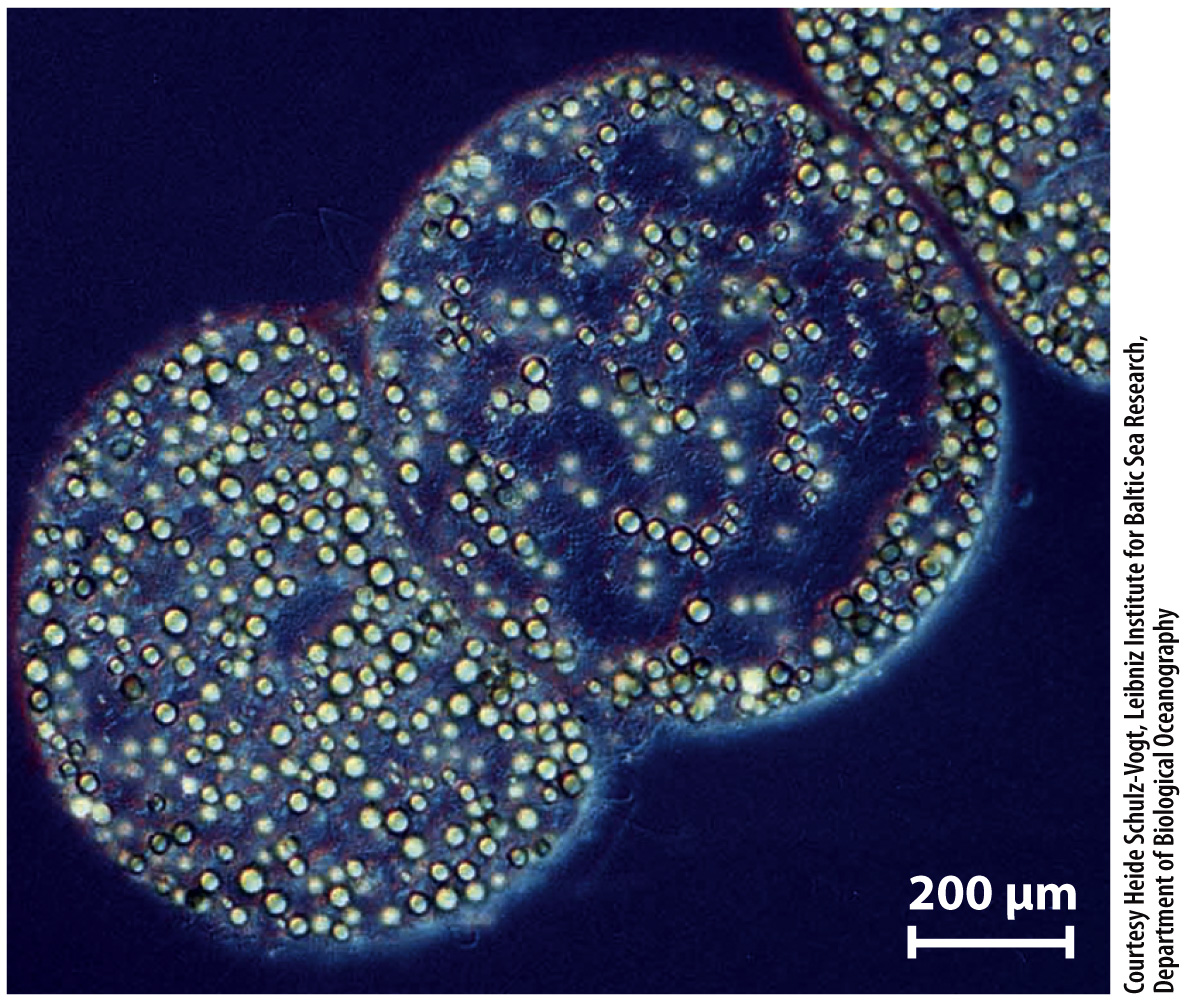Diffusion limits cell size in bacteria.
Most bacterial cells are tiny: The smallest are only 200–300 nanometers (nm) in diameter, and relatively few are more than 1–2 micrometers (µm) long. Why are bacteria so small? The answer has to do with diffusion, a critical process introduced in Chapter 5. If you could watch the movement of any particular molecule in air or water, you would see that its motion is random, sometimes in one direction and sometimes in another. On average, however, more molecules move from a region with a higher concentration of the molecule to a region with a lower concentration of the molecule than move in the other direction. Net movement stops only when the two regions achieve equal concentration, but diffusion continues. Photosynthetic bacteria gain the carbon dioxide they need by the diffusion of CO2 from the environment into the cell, and that is also how respiring bacteria take in small organic molecules and oxygen.
Page 531
Diffusion explains why bacterial cells tend to be small. A small cell has more surface area in proportion to its volume, and the interior parts of a small cell are closer to the surrounding environment than those of a larger cell. As a consequence, slowly diffusing molecules do not have to travel far to reach every part of a small cell’s interior. The surface area of a spherical cell—the area available for taking up molecules from the environment—increases as the square of the radius. However, the cell’s volume—the amount of cytoplasm that is supported by diffusion—increases as the cube of the radius. Therefore, as cell size increases, it becomes harder to supply the cell with the materials needed for growth. For this reason, most bacterial cells are tiny spheres, rods, spirals, or filaments—small enough for molecules to diffuse into cell interiors (Fig. 26.2).

FIG. 26.2 Cell shape and size in Bacteria and Archaea.
A few exceptional bacteria exceed 100 µm in maximum dimension. For example, Thiomargarita namibiensis, a bacterium that lives in oxygen-poor sediments off the coast of southwestern Africa, has a total volume about 100,000,000 times larger than that of Escherichia coli (Fig. 26.3). But, in one sense, T. namibiensis cheats: 98% of its volume is taken up by a large vacuole, so the metabolically active cytoplasm is restricted to a thin film around the cell’s periphery. Thus, the distance through which nutrients move by diffusion is only a few micrometers, as in many other bacteria.

FIG. 26.3 Thiomargarita namibiensis, the largest known bacterial cell. The volume of the cell is mostly taken up by a vacuole, so the active cytoplasm is only a few micrometers thick.
Some bacteria are multicellular, forming simple filaments or sheets of cells. More unusual are myxobacteria, which aggregate to form multicellular reproductive structures that are composed of several distinct cell types (see Fig. 26.2e).

